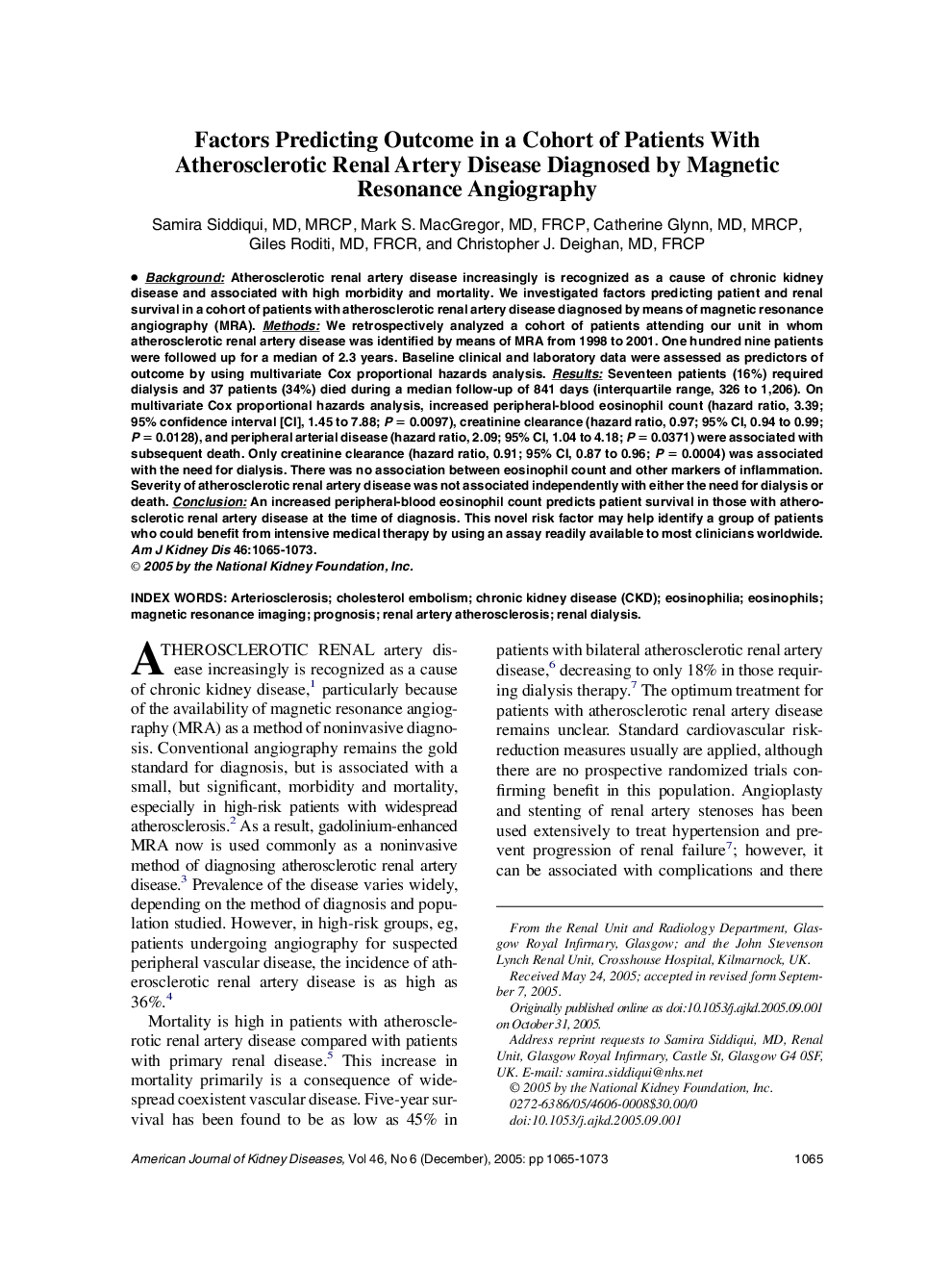| کد مقاله | کد نشریه | سال انتشار | مقاله انگلیسی | نسخه تمام متن |
|---|---|---|---|---|
| 10047287 | 1598396 | 2005 | 9 صفحه PDF | دانلود رایگان |
عنوان انگلیسی مقاله ISI
Factors Predicting Outcome in a Cohort of Patients With Atherosclerotic Renal Artery Disease Diagnosed by Magnetic Resonance Angiography
دانلود مقاله + سفارش ترجمه
دانلود مقاله ISI انگلیسی
رایگان برای ایرانیان
کلمات کلیدی
موضوعات مرتبط
علوم پزشکی و سلامت
پزشکی و دندانپزشکی
بیماریهای کلیوی
پیش نمایش صفحه اول مقاله

چکیده انگلیسی
Background: Atherosclerotic renal artery disease increasingly is recognized as a cause of chronic kidney disease and associated with high morbidity and mortality. We investigated factors predicting patient and renal survival in a cohort of patients with atherosclerotic renal artery disease diagnosed by means of magnetic resonance angiography (MRA). Methods: We retrospectively analyzed a cohort of patients attending our unit in whom atherosclerotic renal artery disease was identified by means of MRA from 1998 to 2001. One hundred nine patients were followed up for a median of 2.3 years. Baseline clinical and laboratory data were assessed as predictors of outcome by using multivariate Cox proportional hazards analysis. Results: Seventeen patients (16%) required dialysis and 37 patients (34%) died during a median follow-up of 841 days (interquartile range, 326 to 1,206). On multivariate Cox proportional hazards analysis, increased peripheral-blood eosinophil count (hazard ratio, 3.39; 95% confidence interval [CI], 1.45 to 7.88; P = 0.0097), creatinine clearance (hazard ratio, 0.97; 95% CI, 0.94 to 0.99; P = 0.0128), and peripheral arterial disease (hazard ratio, 2.09; 95% CI, 1.04 to 4.18; P = 0.0371) were associated with subsequent death. Only creatinine clearance (hazard ratio, 0.91; 95% CI, 0.87 to 0.96; P = 0.0004) was associated with the need for dialysis. There was no association between eosinophil count and other markers of inflammation. Severity of atherosclerotic renal artery disease was not associated independently with either the need for dialysis or death. Conclusion: An increased peripheral-blood eosinophil count predicts patient survival in those with atherosclerotic renal artery disease at the time of diagnosis. This novel risk factor may help identify a group of patients who could benefit from intensive medical therapy by using an assay readily available to most clinicians worldwide.
ناشر
Database: Elsevier - ScienceDirect (ساینس دایرکت)
Journal: American Journal of Kidney Diseases - Volume 46, Issue 6, December 2005, Pages 1065-1073
Journal: American Journal of Kidney Diseases - Volume 46, Issue 6, December 2005, Pages 1065-1073
نویسندگان
Samira MD, MRCP, Mark S. (FRCP), Catherine MD, MRCP, Giles (FRCR), Christopher J. (FRCP),